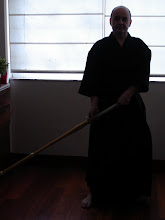 Recently a very good friend of mine send me link to the work of Everett Kennedy Brown who photographed descendents of samurai using 19th-century techniques.
Recently a very good friend of mine send me link to the work of Everett Kennedy Brown who photographed descendents of samurai using 19th-century techniques.
Everything is not what it seems in Everett Kennedy Brown's captivating photographic series on Japan's samurai. While Brown's photographs look like artifacts from the warriors' feudal-period heyday, they document the unique fashions and aesthetic of modern-day samurai. His subjects are members of a community of samurai descendents in Soma, Fukushima, who keep the fighters' traditions alive today.
The American photographer used a 19th-century technique to achieve the look of the images. "The wet plate collodion process dates from the 1850s and the images produced look old and historical," Brown told CNN of his images, which are on display at hpgrp Gallery in New York this month.

Photographing residents of the town in this style "provided them with an opportunity to think about their place in history," Brown said.
Rethinking history
Rethinking history
On March 11, 2011, an earthquake, tsunami and nuclear disaster struck Japan's northeast region of Tohoku, causing mass destruction and loss of life. The damage and fears over radiation forced some residents of Soma out of their hometown. Brown -- who has been based in Japan for several decades -- traveled up to Fukushima prefecture in the aftermath of the March 11 disaster to connect with the people who live there. Once there, he met Michitane Soma, the head of a samurai warrior clan that stretches back 34 generations, through 800 years of history. Soma wanted Brown to photograph his community using the wet plate collodion technique he was known for.
To read more and enjoy more pictures visit the CNN web http://www.cnn.com/2017/03/26/arts/samurai-fashion/index.html






No hay comentarios:
Publicar un comentario